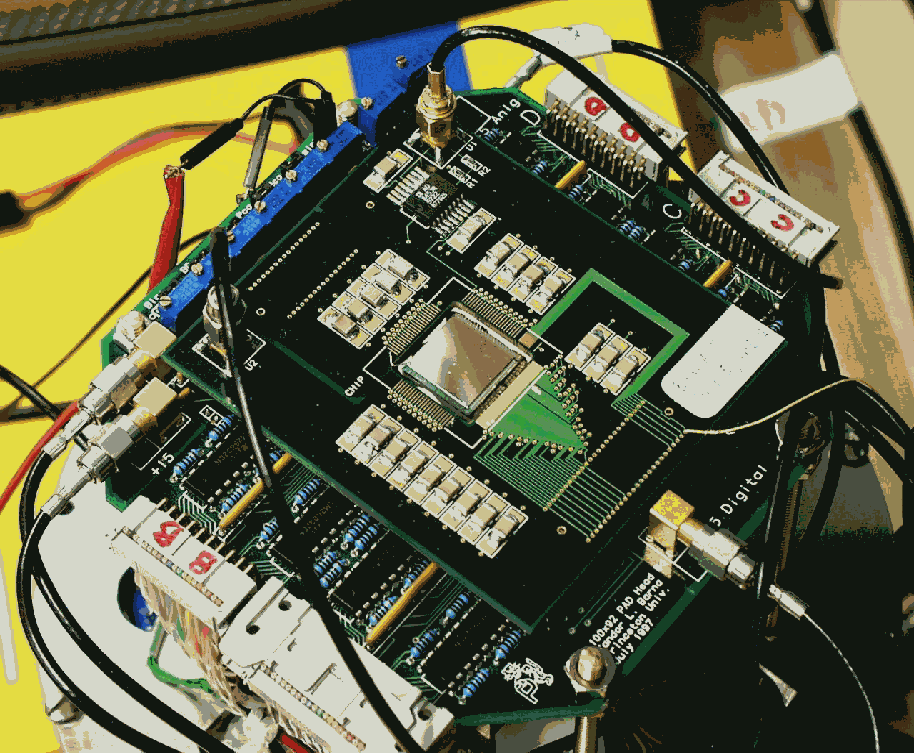X-RAY RUNS: Apply for Beamtime
2017 Nov 1 - Dec 21
2018 Feb 7 - Apr 3
2018 Proposal/BTR deadline: 12/1/17
2018 Apr 11 - Jun 4
2018 Proposal/BTR deadline: 2/1/18
Over the past decade electronic area detectors have
brought entirely new capabilities and efficiencies to x-ray science and
have had a revolutionary impact on biological studies. A joint
collaboration between the Biophysics Group in the Cornell Physics
Department lead by Prof. Sol Gruner and CHESS is developing a new
generation of large area electronic detectors called Pixel Array
Detectors (PADs). This integrating detector is capable of capturing
full-frame images with microsecond exposures having accuracy better than
1%. The PAD consists of a silicon layer, which absorbs the x-rays,
bump-bonded onto a CMOS electronics chip in which each pixel has its own
processing, storage, and readout integrated electronics. Having on-chip
storage for eight full-frame images allows the device to be used in a
"streak-camera" mode to capture x-ray data of fast transient phenomena.
During December 1998, the first prototype of a 92 ´ 100 PAD was
successfully operated at the CHESS D1 beamline for microsecond
time-resolved x-ray diffraction test studies. Tests indicate signal
performance characteristics are comparable to currently used x-ray
detectors, but with a greatly improved time resolution. This prototype
is a test module en route to a larger format detector suitable for
dedicated operation.

Prototype of the 92x100 PAD. The x-ray sensitive area
is the square, mirror-like surface in the center of the picture. It
holds an array of 92x100 Silicon pixel diodes, each a 150m m square
pixel, for a total sensing area of 13.8 mm x 15 mm. The CMOS chip is
bump-bonded beneath the Silicon pixel diodes array. The surrounding
electronics components operate the x-ray detector and readout.
During normal operation this device is enclosed in a light tight
cryostat.
